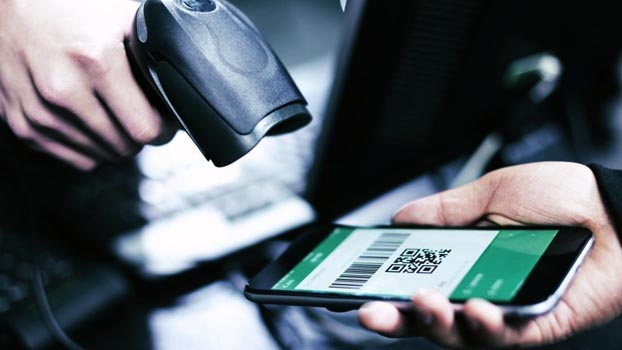Covid-19 and the advent of a ‘contactless economic system’

After succeeding in suppressing the spread of COVID-19 in Wuhan, the original epicenter of the novel coronavirus, China emerged as a global leader in the fight against the pandemic, lending help to countries that subsequently struggled in their efforts to contain the pandemic, including Italy and Spain.
In dealing with the crisis, China derived strength from its political system that prioritizes the interests of the whole (i.e., the Chinese Communist Party system), without regard for the freedom of its citizens or individual wishes.
The CCP seized the opportunity to launch a propaganda campaign to overcome the stigma of the “Chinese virus” (in the words of US President Donald Trump) and extol the superiority of the Chinese system of government.
Notably, China employed the central technologies of the Fourth Industrial Revolution (artificial intelligence, big data and 5G) to trace people infected with the virus, disinfect contaminated areas, deliver goods, check people's temperatures and attempt a variety of new initiatives in telecommunications.
For example, Alibaba introduced a color QR code that can immediately indicate a person’s degree of exposure to the virus based on an individual’s reported health condition and travel history.
Only those with a green QR code were permitted to commute to their workplace or enter public buildings. Anyone caught entering false information was classified as “red.”
WeChat developed an application that allows smartphone users to assess their risk of infection by checking whether they have come into contact with an infected person on a train or airplane. In some Chinese cities, passengers on subways were required to register under their real name or make a reservation in advance.
Megvii developed an AI temperature measurement system that can screen 15 people per second within a range of 5 meters, with a measurement error of just 0.3 degrees Celsius.
The Alibaba Group’s DAMO Academy launched an AI diagnosis system that can read CT scans of people suspected of being infected with the coronavirus and make a diagnosis in just 20 seconds.
A telephone-based health verification service rapidly took off. It used to take between five and seven hours to conduct checks on 200 people, but with the new service the same task can be completed in five minutes.
Wuhan and other areas hit hard by the virus have employed unmanned robots and drones to deliver medicine and food supplies to quarantined patients, monitor their condition, measure temperatures and disinfect contaminated areas.
According to the start-up news and data website 36Kr, JD Logistics rapidly dispatched two driverless delivery vehicles to Wuhan. The company received between 10 and 12 orders per day from Wuhan No. 9 People’s Hospital; 50 to 70 percent of these deliveries were reportedly made by the autonomous delivery vehicle.
Even before the country was hit by the COVID-19 outbreak, the WeDoctor online medical platform had initiated a free 24-hour consultation service. The sharp increase of people reluctant to visit hospitals due to the virus has popularized the concept of online medical care.
Although remote working had already been common even before the outbreak, Alibaba provided its telecommuting platform DingTalk free of charge to half of all (or roughly 10 million) Chinese corporations, increasing its total membership to 200 million. At present, more than 300 million employees of 18 million companies in China are working remotely.
With the postponement of the new school semester, China’s Ministry of Education partnered with telecom operators to create a national-scale online study platform. Roughly 180 million elementary, middle and high school students now receive lessons online.
Not only has the global pandemic forced us to adopt the new practice of social distancing, in which handshakes, hugs and kisses are all avoided, but a new “contactless economic system" is also emerging, in which people live, move about, work and even teach and learn without coming into contact with others.
At some point, the threat posed by COVID-19 will recede, and people may resume shaking hands and hugging each other. By then, however, the innovations that comprise the infrastructure of our new contactless economic system will have taken root through social implementation. And in this regard, it seems likely that China will have an overwhelming competitive edge.
As the virus spread rapidly across the United States, the police department in Chula Vista, California, purchased two drones from the Chinese manufacturer DJI. The drones have been used to enforce the statewide lockdown: Drone loudspeakers warn people that gatherings and events are prohibited, while their surveillance cameras can photograph people's faces even at night.
Not long ago the U.S. government cited national security concerns in warning against the use of Chinese-made drones. But the COVID-19 threat left no room for such concerns. As Deng Xiaoping famously said, “It doesn’t matter if the cat is black or white, as long as it catches mice.”
A “contactless economic system” carries the unpleasant prospect of added distance between people becoming the “new normal.” The technology that enables us to measure a person’s temperature from anywhere could evolve into one capable of “detecting” human emotions such as joy, grief or anger.
Such a tool might allow despots to identify anyone in their audience who tries to hide feelings of anger or dissent. Indeed, Yuval Harari, the author of "Homo Deus," warns of the advent of just this type of “biometric surveillance society.”
Yoichi Funabashi is chairman of the Asia Pacific Initiative and a former editor-in-chief of the Asahi Shimbun.
Source: Japan Times



